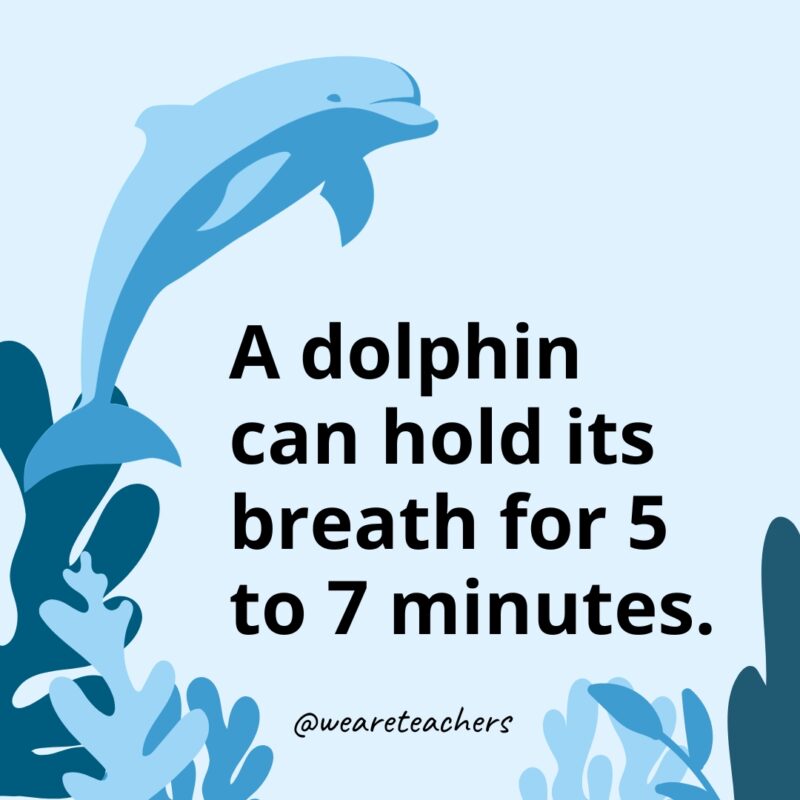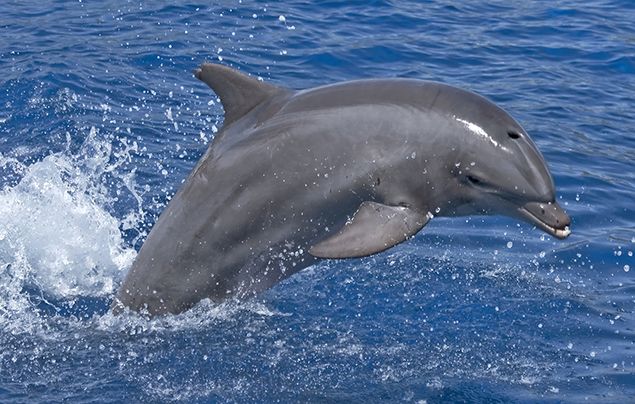Discover How Dolphin Facts Program Their Strong Bond with Human Beings
Check Out the Globe of Dolphins: Surprising Truths About These Lively Creatures
Dolphins, usually celebrated for their spirited demeanor and social structures, exhibit a variety of unexpected actions that extend much beyond mere enjoyment. Their elaborate communication methods and progressed problem-solving abilities disclose a level of intelligence that remains to fascinate researchers. Additionally, one-of-a-kind hunting strategies and flexibility in numerous settings highlight their setting as crucial gamers in aquatic ecosystems. However, these exciting animals encounter considerable conservation obstacles that could threaten their presence. As we explore the complexities of dolphin life, one should take into consideration the ramifications of these hazards and the actions needed to ensure their survival.
Social Frameworks of Dolphins
Although dolphins are commonly perceived as singular creatures, they actually exhibit complex social structures that play a critical role in their behavior and survival. These frameworks are identified by the formation of groups known as sheathings, which might consist of a few individuals to numerous lots, depending on the varieties and environmental problems. Shells offer various features, consisting of foraging, social interaction, and protection against predators.
Dolphins show an array of social behaviors, including cooperative searching and nurturing of young. Within capsules, people often create solid bonds, and relationships can prolong past instant family members links. These social connections are crucial for the exchange of understanding and abilities, especially in hunting methods and navigation.
Moreover, the social dynamics within husks can be affected by elements such as age, sex, and reproductive condition, bring about a pecking order that dictates interactions. Research shows that these social frameworks enhance the overall fitness of dolphins, boosting their opportunities of survival in a varied variety of aquatic atmospheres. Therefore, understanding the social structures of dolphins provides beneficial insights into their ecological roles and conservation needs, highlighting the significance of preserving their all-natural environments.
Communication Skills and Strategies
Dolphins are renowned for their advanced communication abilities, which play a critical role in their social interactions and coordination within hulls. These aquatic creatures use a complex system of articulations, body movement, and echolocation to convey details and develop social bonds. Their vocal arsenal consists of clicks, whistles, and various other noises that serve different features, from signifying presence to coordinating team movements during hunting.
One of the most appealing facets of dolphin interaction is making use of trademark whistles. Each dolphin establishes a special trademark whistle, which works in a similar way to a name, permitting individuals to determine and call each various other. This individualized communication improves social communication and helps with cooperation among skin members.
In addition to articulations, dolphins engage in non-verbal interaction with body language, such as jumping, emerging, and posturing. These behaviors can reveal feelings, objectives, and even spirited interactions. Echolocation, another essential technique, enables dolphins to navigate their atmosphere and locate target, further stressing their reliance on interaction for survival.

Intelligence and Problem-Solving Capabilities
Frequently regarded as among the most smart species in the animal kingdom, dolphins display exceptional analytical abilities that highlight their cognitive prowess. Research study has consistently revealed that these marine animals have sophisticated cognitive abilities, enabling them to navigate complicated social interactions and ecological difficulties.
Dolphins demonstrate the ability to discover from experience and adapt their habits appropriately. They can participate in tool usage, such as using aquatic sponges to secure their rostrums while foraging on the ocean flooring. This innovative habits reflects an understanding of reason and effect, a hallmark of high knowledge.
Moreover, dolphins stand out in cooperative analytical situations. In various researches, they have actually showcased their capacity to interact to achieve typical objectives, such as obtaining food or aiding injured buddies. Their ability to interact effectively throughout these jobs even more emphasizes their advanced social structures.

Unique Hunting Techniques
Using a selection of special hunting strategies, dolphins have actually adapted their techniques to make the most of effectiveness and success in capturing prey. In this method, a group of dolphins develops a circular curtain of bubbles to confine fish right his response into a limited ball, making it less complicated for them to capture their dish.
An additional reliable technique is "hair feeding," where dolphins chase fish onto mudflats or sandy coasts, allowing them to take their prey in shallow water. This technique requires exact timing and synergy, highlighting their capability to communicate and work with with one another.
Dolphins also display "kerplunk feeding," where they use a combination of rate and agility to leap out of the water and land back, developing a splash that disorients fish. This technique not only aids in capturing target however additionally demonstrates their outstanding physical capacities.
Via these varied searching methods, dolphins exemplify their versatility and resourcefulness, ensuring their survival in different marine settings. Their searching methods are a testament to their eco-friendly duty as skilled killers in the sea.

Conservation Initiatives and obstacles
The impressive searching techniques of dolphins highlight their versatility despite ecological challenges. Nevertheless, these impressive creatures face significant conservation difficulties due to human activities and environmental changes. Overfishing, environment destruction, and pollution posture severe dangers to dolphin populaces worldwide. As fish stocks decrease, dolphins may have a hard time to discover sufficient food, influencing their health and wellness and reproductive success.
Moreover, aquatic contamination, specifically plastic waste and chemicals, infects their habitats and food sources, bring about extreme health issues. Complication in fishing equipment and bycatch further aggravate the decline of dolphin populations, as several are inadvertently caught and killed.
Conservation efforts are underway to minimize these difficulties. Organizations are functioning to establish aquatic safeguarded areas, implement sustainable angling techniques, and raise public recognition about the plight of dolphins. In addition, research study efforts intend to keep track of dolphin populations and their habitats, providing data necessary for effective preservation approaches.
Eventually, a joint strategy involving governments, NGOs, and neighborhood neighborhoods is vital for making certain the long-term survival of dolphins. Shielding these intelligent and playful creatures requires addressing the diverse hazards they encounter in their ever-changing setting.
Final Thought
Dolphins exemplify amazing social structures, progressed interaction skills, and outstanding cognitive capabilities that add to their survival in useful source varied aquatic environments. Special searching strategies display their adaptability and knowledge, while recurring preservation obstacles highlight the immediate need for safety measures. Making certain the preservation of dolphin populations needs concerted efforts to address these hazards, thus safeguarding not only the species themselves yet additionally the intricate ecological communities they populate. The research of dolphins proceeds to disclose understandings into their complex habits and environmental relevance.
Although dolphins are usually perceived as singular animals, they in fact display facility social frameworks that play an essential role in their habits and survival. Research indicates that these social structures improve the general physical fitness of dolphins, enhancing their chances of survival in a diverse range of aquatic settings. Thus, understanding the social structures of dolphins offers valuable understandings into their eco-friendly functions and conservation demands, highlighting the importance of preserving their all-natural environments.
Employing a range of one-of-a-kind hunting methods, dolphins have adjusted their straight from the source techniques to maximize performance and success in catching victim.The outstanding searching techniques of dolphins highlight their versatility in the face of ecological challenges.